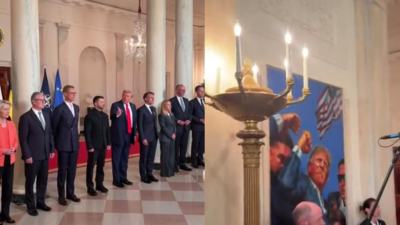
Global technology expenditure in 2025 is unlikely to reach the $6-trillion mark due to tariff-driven financial policies from Washington, causing businesses to hesitate in committing substantial funds to long-term projects.Leading industry analysts – Canalys, Forrester, Gartner and IDC – have consistently reduced their IT growth projections for 2025 since tariff discussions emerged in Spring. These forecasts have continued to decline as extended negotiations suggest potential additional business restrictions.Current projections indicate maximum budget growth of 7%, reaching $4.9-$5.7 trillion. This trend affects India’s outsourcing sector, which has been a significant national achievement over the past thirty years, as reported by Economic Times.“Forrester’s estimates reflect a modest upward revision versus 2024, but ongoing trade disputes and tariffs add significant uncertainty, especially after the US-EU deal and developments in Asian markets,” said Biswajeet Mahapatra, Principal Analyst, Forrester.Research organisations have revised their forecasts downward several times this year. Gartner reduced its January growth forecast from 9.8% to 7.9%, estimating 2025 spending at $5.43 trillion. Forrester anticipates 5.6% growth in global technology spending for 2025, reaching $4.9 trillion, up from $4.7 trillion in 2024.Canalys now predicts IT spending will reach $5.35 trillion, representing 7% annual growth, reduced from its earlier 8.3% forecast in November 2024.
IT outsourcing
Experts, quoted by ET, indicated that Indian IT outsourcing could face stronger effects if the proposed 50% tariff is implemented after the current pause. Currently, services remain outside the scope of tariff discussions, which focus on goods shipments.Forrester’s Mahapatra noted that despite tariff uncertainties, AI and cloud demand will sustain software and IT services. Asia Pacific technology spending is expected to increase by 6.5% in 2025 to $722 billion, with India showing 11% growth, exceeding regional averages. “However, these figures may soften by 1 or 2 percentage points depending on specific country exposure and IT spending categories due to tariff-related disruptions,” Mahapatra cautioned.Vinayaka Venkatesh, senior market analyst, IT Spending at IDC Asia/Pacific, stated that the 50% tariff on India introduces additional trade and policy uncertainty. “Given India’s role in global outsourcing and technology supply chains, such measures-if implemented-could have meaningful downstream impacts,” Venkatesh said.While technology spending continues to grow in 2025, the slowdown from previous year demonstrates how tariffs and policy uncertainty affect enterprise confidence. AI and cloud remain strong areas, offsetting reduced hardware and traditional IT budgets. India maintains above-average performance in enterprise spending and IT services, despite trade risks.Also read: Unemployment eases to 5.2% in July; rural areas drive improvementIndia’s IT spending shows 8.7% growth, supported by a 90-day extension on certain tariff measures, according to IDC. Venkatesh noted that North America and Europe, most affected by tariff and policy changes, are experiencing reduced demand in consumer hardware and mobility sectors.Meanwhile, Europe faces additional challenges from US tariffs potentially affecting trans-Atlantic business, although energy collaborations might reduce impact, Forrester reported. The subdued global environment affects Indian IT service providers.TCS has reduced its global workforce by approximately 2%. Analysts anticipate further workforce adjustments across the sector.“Many large Indian IT services companies face weak Q1 deal pipelines and margin compression. While mass layoffs are unlikely, there have already been quiet job trims, deferred pay hikes, and more selective hiring, especially in mid-to-senior management roles,” said Mahapatra of Forrester.








